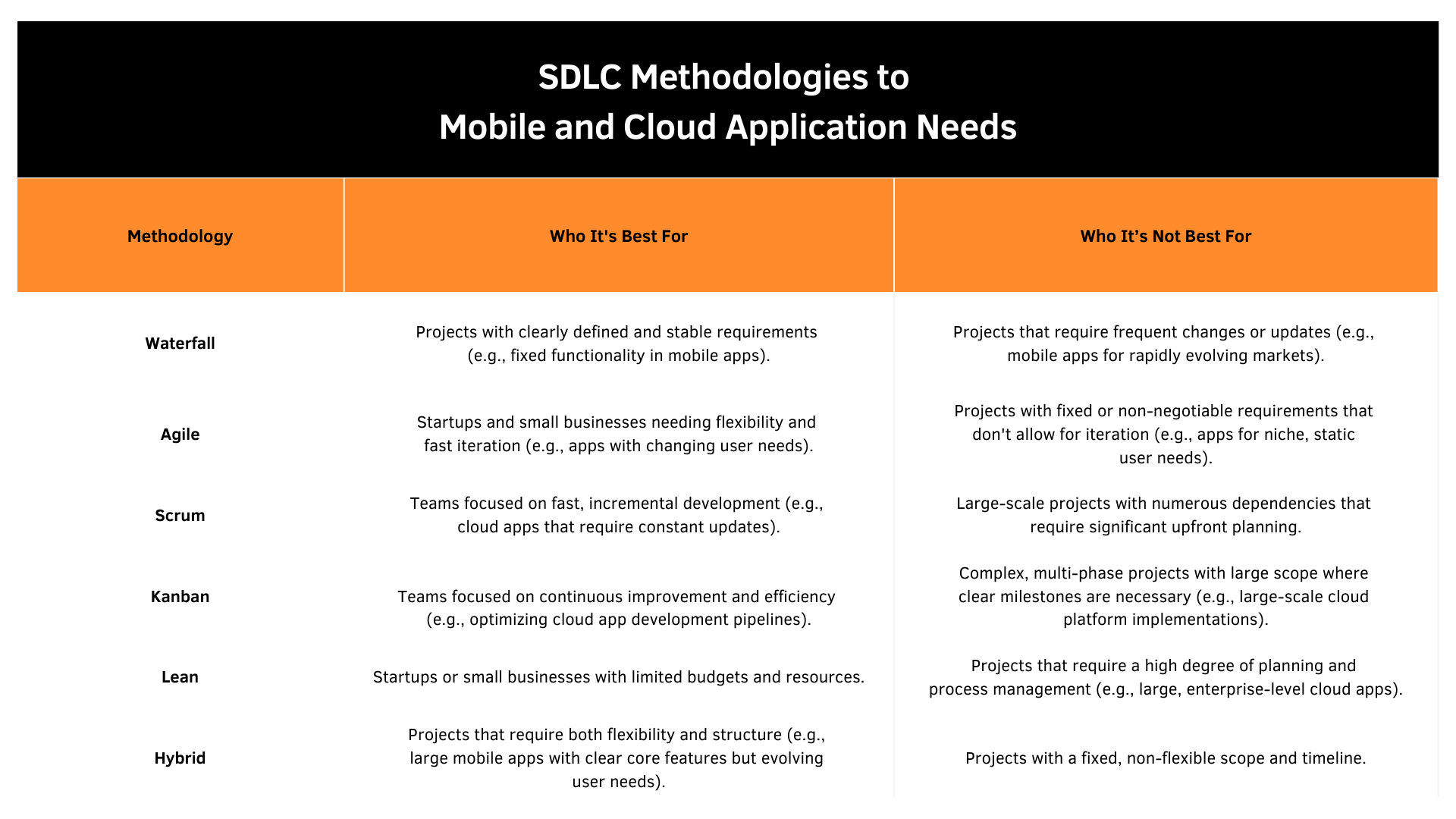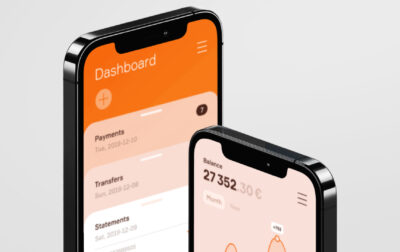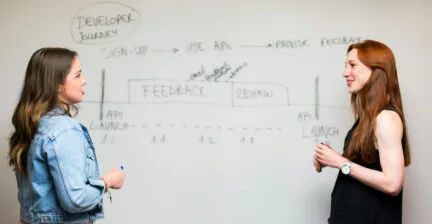From Waterfall to Agile: Selecting the Right Development Method for Your Business Growth
In today’s fast-paced digital landscape, selecting the right software development methodology is crucial for business success. With a variety of Software Development Life Cycle (SDLC) approaches available, companies must choose a model that aligns with their project scope, team expertise, and adaptability requirements. From the structured Waterfall method to the flexible Agile framework and hybrid models that blend both, understanding the strengths and limitations of each methodology can help ensure a smooth development process. Whether you are building a mobile application, a cloud-based solution, or an enterprise system, the right SDLC approach will significantly impact efficiency, cost, and product quality.
1.
Waterfall: A Sequential and Predictable Approach
The Waterfall methodology is one of the earliest and simplest approaches to software development. This traditional model follows a rigid, step-by-step approach where each phase (requirements, design, development, testing, deployment, maintenance) must be completed before moving to the next.
The Waterfall methodology is best suited for projects that are stable and well-understood from the start.
Waterfall Advantages:
- Easy to understand and manage due to its structured framework
- Clear deliverables at each stage
- Best for short-term projects with stable requirements
Waterfall Limitations:
- Inflexible to changes once a phase is completed
- Difficult to accommodate changes mid-project
2.
Agile: Flexibility and Iteration
Agile’s emphasis on adaptability and collaboration makes it an ideal choice for projects that need flexibility and frequent updates. By breaking development into smaller, manageable sprints, teams can respond rapidly to changing requirements and customer feedback. This iterative process ensures that value is delivered incrementally, making it easier to refine and improve the product along the way.
Agile methodology is best suited for projects with evolving requirements or a focus on delivering value incrementally.
Agile Advantages:
- Encourages customer feedback and involvement
- Delivers functional software faster
- Accommodates changing priorities effectively
Agile Limitations:
- Requires strong team collaboration and communication
- Can be challenging to manage without experience in Agile principles
How to Optimize Your Software Development Lifecycle: Key Stages & Tools
Read it3.
Scrum: A Framework Within Agile
Scrum is an effective Agile framework designed for projects that benefit from frequent, incremental deliveries. The time-boxed sprints provide a structured approach, ensuring teams focus on specific tasks within a set period. Daily stand-up meetings further enhance collaboration, keeping team members accountable and aligned on progress.
Scrum methodology is best suited for projects requiring frequent deliverables and teamwork.
Scrum Advantages:
- Promotes transparency and adaptability
- Facilitates rapid problem-solving
- Focuses on continuous improvement through retrospectives
Scrum Limitations:
- Success depends on disciplined implementation
- Role definitions (e.g., Scrum Master, Product Owner) may require additional training
4.
Lean: Streamlining Processes for Efficiency
Lean methodology is designed to streamline processes by eliminating waste and focusing only on what adds value for the customer. By prioritizing efficiency, it helps teams achieve more with limited resources, making it ideal for environments with tight budgets or time constraints.
Lean methodology is best suited for teams aiming for high efficiency with limited resources in the software development lifecycle.
Lean Advantages:
- Simplifies workflows for better productivity
- Reduces costs by eliminating unnecessary steps
- Encourages continuous process improvement
Lean Limitations:
- May overlook broader project needs in pursuit of efficiency
- Relies heavily on accurate demand forecasts

5.
Kanban: Visualizing and Managing Workflows
Kanban uses visual boards to track workflows and limit work in progress (WIP). It provides a clear overview of tasks, helping teams manage efficiency and avoid bottlenecks.
Kanban methodology is best suited for projects requiring flexibility and efficient task management.
Kanban Advantages:
- Provides a visual representation of progress
- Helps prevent bottlenecks with WIP limits
- Flexible and easy to implement
Kanban Limitations:
- Can lack structure for large or complex projects
- Success depends on consistent updates and monitoring
6.
Hybrid Models: Tailored Solutions for Unique Needs
Hybrid models offer the flexibility to tailor the software development lifecycle to the unique needs of each project. By combining the strengths of Agile’s adaptability with Waterfall’s structured approach, teams can address both dynamic and predictable aspects of development. This blend allows for greater customization, ensuring that projects can evolve smoothly while maintaining clear milestones.
Hybrid Model Advantages:
- Offers customization based on project needs
- Balances flexibility and structure
- Ideal for diverse or multi-phase projects
Hybrid Model Limitations:
- Can be complex to implement and manage
- Requires expertise in multiple methodologies
Optimize your development process!
How to Сhoose the Right SDLC Methodology?
Choosing the most suitable SDLC methodology hinges on your project’s scope, the team’s skill set, and its ability to adapt to changes.
1. Project Scope and Size
- Small-scale projects. Waterfall or Lean could be ideal for projects with well-defined requirements and minimal changes.
- Large-scale projects. Agile methodologies like Scrum or Hybrid models, which combine different methodologies, offer more flexibility to accommodate evolving requirements.
2. Team Expertise
- Skilled teams. If your team is experienced with Agile methods, Scrum or Kanban might be preferable.
- Limited experience. Larger, more diverse teams often benefit from the collaborative features of Agile or Spiral models, fostering adaptability and communication. Conversely, smaller teams may find the structured boundaries of Waterfall or Incremental models more manageable and efficient.
3. Complexity and Uncertainty
- High complexity. Projects with evolving or unclear requirements may benefit from Agile due to its adaptability.
- Low complexity: Waterfall can work well for straightforward projects with a clear set of requirements from the start in the software development lifecycle process.
4. Preferences
- Collaborative environments. Agile and its frameworks (Scrum, Kanban) excel in environments where continuous collaboration and feedback are needed.
- Structured environments. If you prefer clear documentation and processes, Waterfall might be more suitable.
5. Timeline and Flexibility
- Tight deadlines. Agile and Scrum can deliver incremental results quickly, providing flexibility and faster time-to-market.
- Fixed deadlines and scope. Waterfall is effective for projects with fixed requirements and timelines.

What’s the Secret to Selecting the Perfect SDLC Methodology?
The secret to selecting the perfect methodology lies not in finding a one-size-fits-all solution, but in understanding your project’s unique needs and constraints. It involves assessing your team’s strengths, considering business expectations, and being willing to adapt and evolve throughout the development process, especially during the software development lifecycle phases.
Remember that the right methodology is not static – it may change over time as your organization grows and adapts. Stay informed about emerging trends and technologies, and don’t hesitate to mix and match elements from different methodologies to create a hybrid approach that suits your specific situation.
Ultimately, the secret lies in aligning the methodology with measurable success factors such as time-to-market, defect rates, and user satisfaction, ensuring the approach evolves alongside your project needs.
Conclusion
Selecting the right SDLC methodology is a strategic decision that can significantly influence project success. A well-chosen approach helps teams improve efficiency, manage risks, and align software development with business goals. Whether leveraging Waterfall’s structure, Agile’s adaptability, or a hybrid model for maximum flexibility, businesses should remain open to evolving their approach as needs change. The key lies in continuous assessment, collaboration, and a willingness to refine processes to meet both user expectations and business objectives.
Looking to enhance your software development lifecycle? Contact us for a free consultation to align tools and methodologies with your goals.
RELATED SERVICES
MOBILE BANKING SOFTWARE DEVELOPMENT
One of the best examples of staff augmentation cooperation model, where our unmanaged team of experienced iOS, Android and QA engineers has completely reworked and significantly expanded mobile application of one of the leading Finnish banks.
One of the best examples of staff augmentation cooperation model, where our unmanaged team of experienced iOS, Android and QA engineers has completely reworked and significantly expanded mobile application of one of the leading Finnish banks.
We Cover
- Design
- Development
- Testing
- Maintenance











